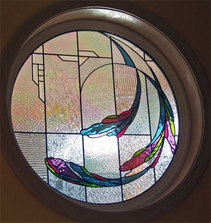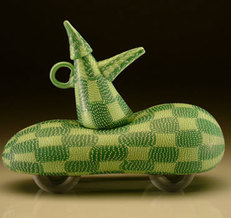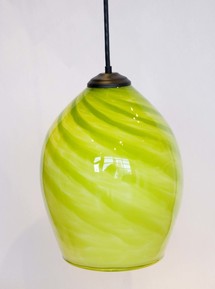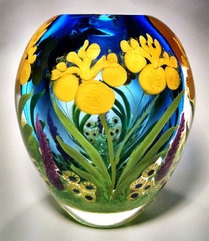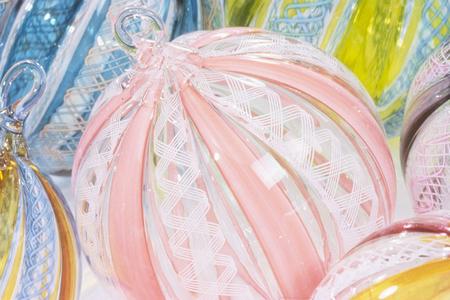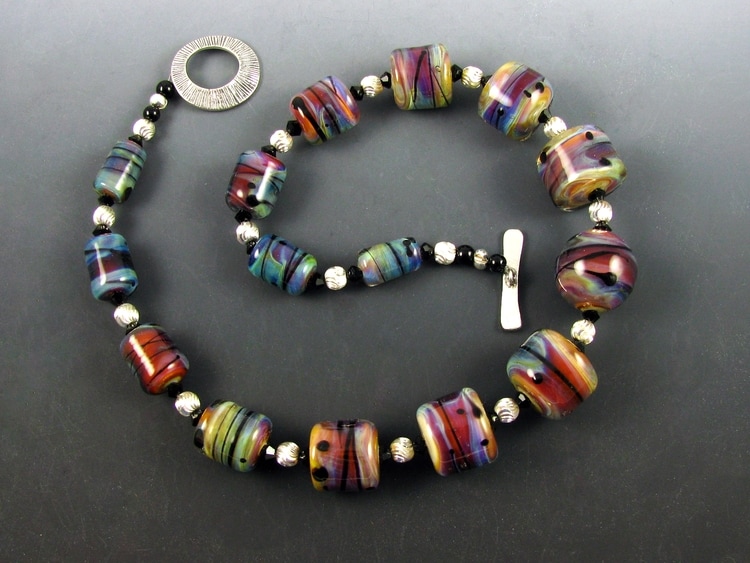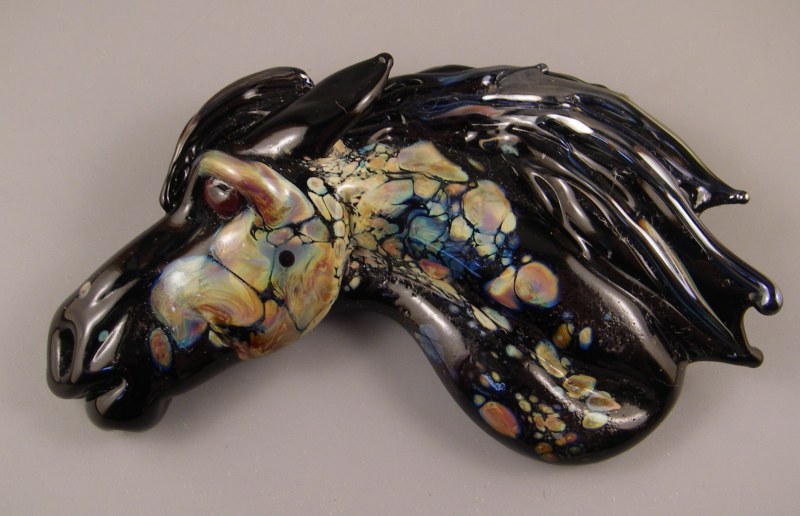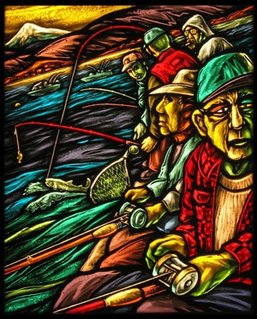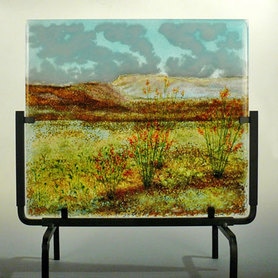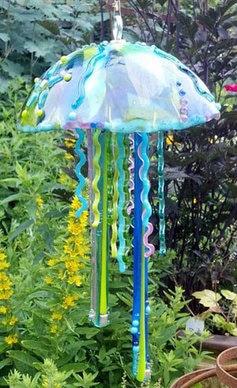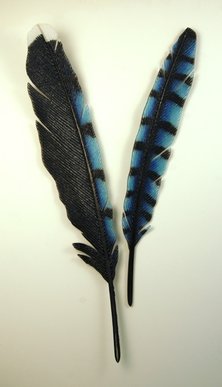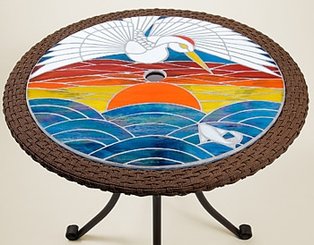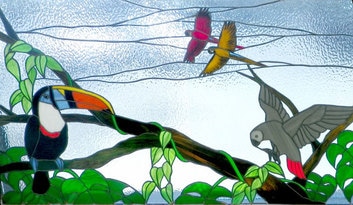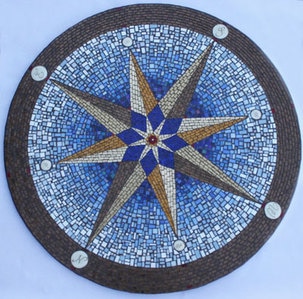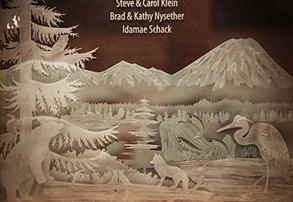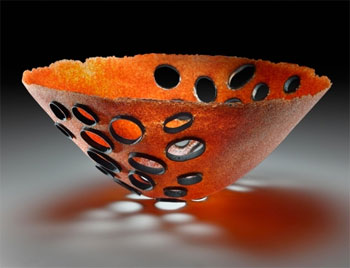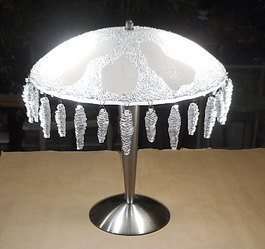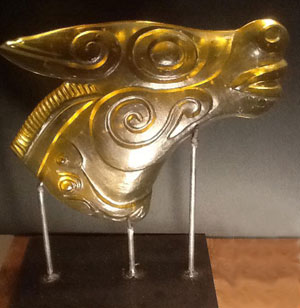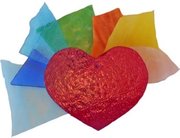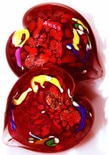Newsletter: Winter 2017
|
Can you recognize good craftsmanship?
What should you look for when adding art glass to your collection or in judging your own work?
"Art" seems to be, like beauty, in the eye of the beholder, but you can tell if glass is well-crafted. I interviewed several glass-art makers to compile this list of what shows mastery of materials and techniques in the various areas of glass-working (photos are used with permission from local artists, most of whom teach if you want to increase your own mastery)
|
In all types of work:
|
Controlled asymmetry:
|
|
Hot glass: Blown, Cast and Torchworked
|
|
|
Warm glass: Fusing, slumping, kiln casting
|
|
Flat glass: Certain shapes like deep V's, extremely long narrow strips, and narrow hourglass-like pieces are prone to breakage even if modern machinery lets you cut them. That's why you often see what seem to be "extra" construction lines in a stained glass piece. A well thought out design deals gracefully with these necessary lines.
The expert also chooses glass transparency/opacity well for its placement: transparent glass (called "cathedral") looks dark in a mosaic table but stunning in a south window during the day. Opaque ("opalescent" or "opal") or semi-opaque glass ("wispy" or "streaky") will look darker with the sun coming through but much more colorful than transparent when the sun isn't behind it. Lead and copper foil:
|
Construction lines disguised:
Karen Seymour, Red Crowned Crane table
|
|
Mosaic & Applique:
Cold work: grinding, etching, sandblasting, carving
There are many more talented local artists working in glass, these are just the ones I know who also had time to supply an image. Many thanks to all those who gave input, especially Lael Bennett, Kathy Johnson, Steph Mader, Barbara Sanderson, and Sandy Spear. Karen Seymour, Editor
|
Seattle Mosaic Arts: crisp outlines
|
What's New?
|
How'd They Do That?
|
Poul Erickson's kiln-cast horse started as a carving in an oil based clay (photo 1). He covered it with Castalot to make a mold (2). The carving was removed from the mold (3). The empty mold was fired to 50 degrees over casting temp, cooled, filled with amber glass (4) and fired again (5)
|
Announcements & Events
Good news from suppliers:
Bullseye Glass has much of the new EPA gear in place and expects to be back in full production soon.
Glass events are pretty quiet so it might be a good time to take a class or come up with some new designs and send us photos for our next issue (friendsinglass you-know-what gmail.com).
You will find local glass artists at:
The next newsletter and a different coupon will be mailed in March.
In the meantime you can post your comments, new work etc. to our moderated Facebook page
Bullseye Glass has much of the new EPA gear in place and expects to be back in full production soon.
- They have some very nice new greens
- The Bullseye Portland Resource Center winter sale is Feb 14-18
Glass events are pretty quiet so it might be a good time to take a class or come up with some new designs and send us photos for our next issue (friendsinglass you-know-what gmail.com).
You will find local glass artists at:
- NW Flower and Garden Show, Seattle, Feb 22-26
- Best of the NW, Seattle, March 25-26
- other events will be added to the calendar as we find them (fill out the form at the bottom of the events page to add yours).
- Glass Craft and Bead Expo, Las Vegas March 29-April 2
The next newsletter and a different coupon will be mailed in March.
In the meantime you can post your comments, new work etc. to our moderated Facebook page
|
Friends In Glass Winter 2017 Coupon:
Romance with Glass Expires February 17th, 2017 10% off of full retail price of in-stock art glass or glass art * with a $25 minimum purchase at any of these participating glass shops and galleries: (*subject to the fine print on the actual coupon)
|
Copyright Friends In Glass 2017 -- All Images are used by permission and those copyrights are retained by the artists
